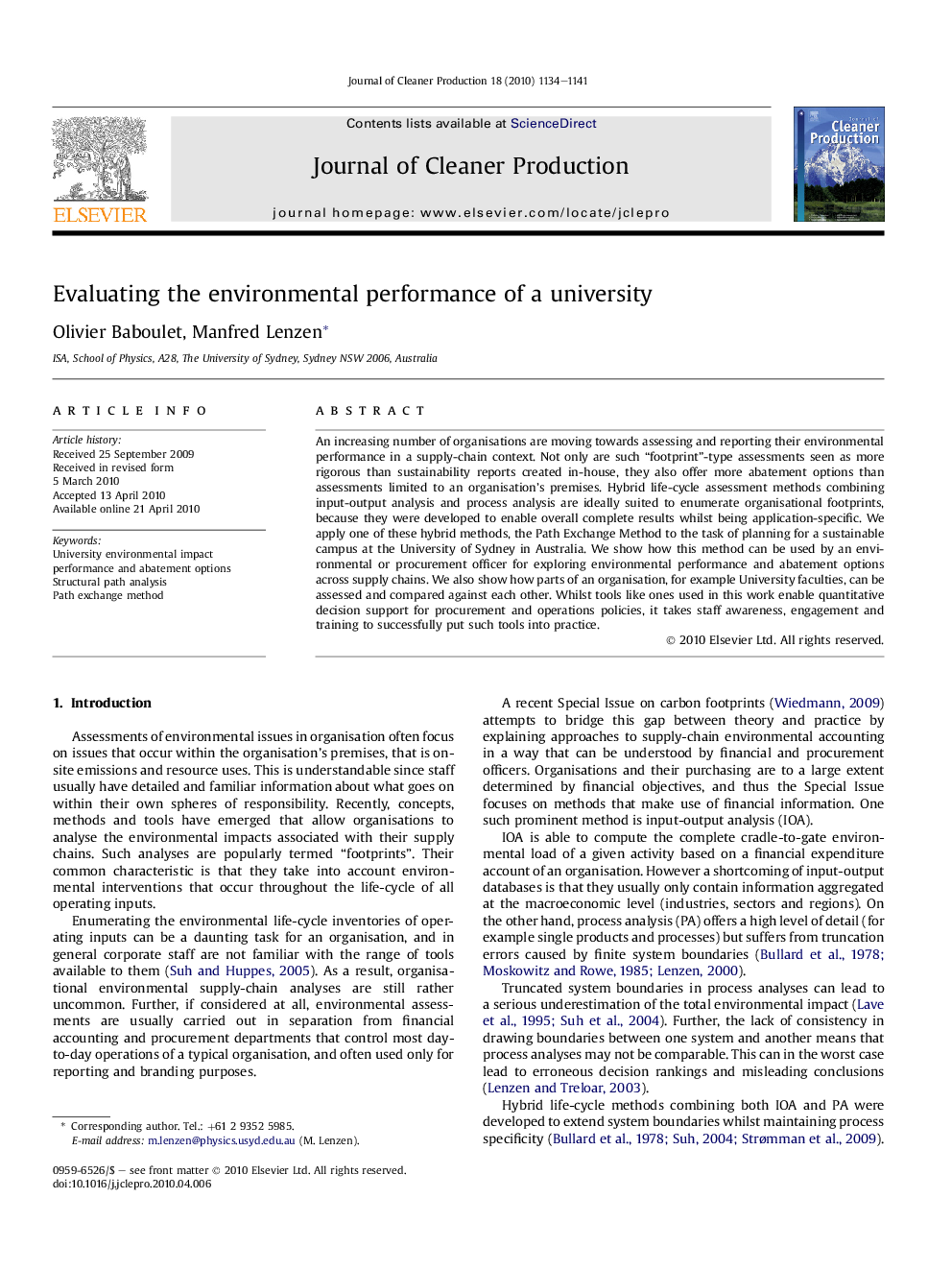| Article ID | Journal | Published Year | Pages | File Type |
|---|---|---|---|---|
| 1745991 | Journal of Cleaner Production | 2010 | 8 Pages |
An increasing number of organisations are moving towards assessing and reporting their environmental performance in a supply-chain context. Not only are such “footprint”-type assessments seen as more rigorous than sustainability reports created in-house, they also offer more abatement options than assessments limited to an organisation’s premises. Hybrid life-cycle assessment methods combining input-output analysis and process analysis are ideally suited to enumerate organisational footprints, because they were developed to enable overall complete results whilst being application-specific. We apply one of these hybrid methods, the Path Exchange Method to the task of planning for a sustainable campus at the University of Sydney in Australia. We show how this method can be used by an environmental or procurement officer for exploring environmental performance and abatement options across supply chains. We also show how parts of an organisation, for example University faculties, can be assessed and compared against each other. Whilst tools like ones used in this work enable quantitative decision support for procurement and operations policies, it takes staff awareness, engagement and training to successfully put such tools into practice.
